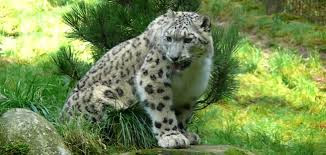Periyar National Park
 Periyar National Park lies in the middle of a mountainous area of the Cardamom Hills.
In the north and the east it is bounded by mountain ridges of over
1,700 m (5,600 ft) altitude and toward the west it expands into a 1,200
metres (3,900 ft) high plateau. From this level the altitude drops steeply to the deepest point of the reserve, the 100 metre valley of the Pamba River. The highest peak is the 2,019 m (6,624 ft) high Kottamalai. The Periyar and Pamba Rivers originate in the forests of the reserve. The other prominent peaks within the park are Pachayarmala, Vellimala, Sunderamala, Chokkampetti mala and Karimala. The topography consists of steep and rolling hills which are thickly
wooded. The sanctuary surrounds Periyar Lake, a reservoir measuring
26 km2 (10 sq mi) which was formed when the Mullaperiyar Dam
was erected in 1895. The reservoir and the Periyar River meander around
the contours of the wooded hills, providing a permanent source of water
for the local wildlife.
Periyar National Park lies in the middle of a mountainous area of the Cardamom Hills.
In the north and the east it is bounded by mountain ridges of over
1,700 m (5,600 ft) altitude and toward the west it expands into a 1,200
metres (3,900 ft) high plateau. From this level the altitude drops steeply to the deepest point of the reserve, the 100 metre valley of the Pamba River. The highest peak is the 2,019 m (6,624 ft) high Kottamalai. The Periyar and Pamba Rivers originate in the forests of the reserve. The other prominent peaks within the park are Pachayarmala, Vellimala, Sunderamala, Chokkampetti mala and Karimala. The topography consists of steep and rolling hills which are thickly
wooded. The sanctuary surrounds Periyar Lake, a reservoir measuring
26 km2 (10 sq mi) which was formed when the Mullaperiyar Dam
was erected in 1895. The reservoir and the Periyar River meander around
the contours of the wooded hills, providing a permanent source of water
for the local wildlife.
 The park is made up of tropical evergreen and moist deciduous forests, grasslands, stands of eucalyptus, and lake and river ecosystems. There are many hundreds of flowering plant taxa, including about 171 species of grass and 140 species of orchids.
The grasses are found in the open grasslands found on the edges of the
water body where fire resistant vegetation grows and dense grasses like
elephant grass are found. This is the common dining hall of various
herbivores.
The park is made up of tropical evergreen and moist deciduous forests, grasslands, stands of eucalyptus, and lake and river ecosystems. There are many hundreds of flowering plant taxa, including about 171 species of grass and 140 species of orchids.
The grasses are found in the open grasslands found on the edges of the
water body where fire resistant vegetation grows and dense grasses like
elephant grass are found. This is the common dining hall of various
herbivores.The forests contain deciduous and semi evergreen trees like teak, rosewoods, terminalias, sandalwoods, jacarandas, mangoes, jamun, tamarind, banyans, sacred fig, plumerias, royal poinciana, kino tree, bamboos, and the only South Indian conifer, Nageia wallichiana. The medicinal gloriosa lily grows in the park. The endemic flora includes Habenaria periyarensis and Syzygium periyarensis.
The park is surrounded by agricultural regions, especially plantations of such crops as tea, cardamom, and coffee.
Periyar National Park lies in the middle of a mountainous area of the Cardamom Hills. In the north and the east it is bounded by mountain ridges of over 1,700 m (5,600 ft) altitude and toward the west it expands into a 1,200 metres (3,900 ft) high plateau. From this level the altitude drops steeply to the deepest point of the reserve, the 100 metre valley of the Pamba River. The highest peak is the 2,019 m (6,624 ft) high Kottamalai. The Periyar and Pamba Rivers originate in the forests of the reserve. The other prominent peaks within the park are Pachayarmala, Vellimala, Sunderamala, Chokkampetti mala and Karimala. The topography consists of steep and rolling hills which are thickly wooded. The sanctuary surrounds Periyar Lake, a reservoir measuring 26 km2 (10 sq mi) which was formed when the Mullaperiyar Dam was erected in 1895. The reservoir and the Periyar River meander around the contours of the wooded hills, providing a permanent source of water for the local wildlife.




















